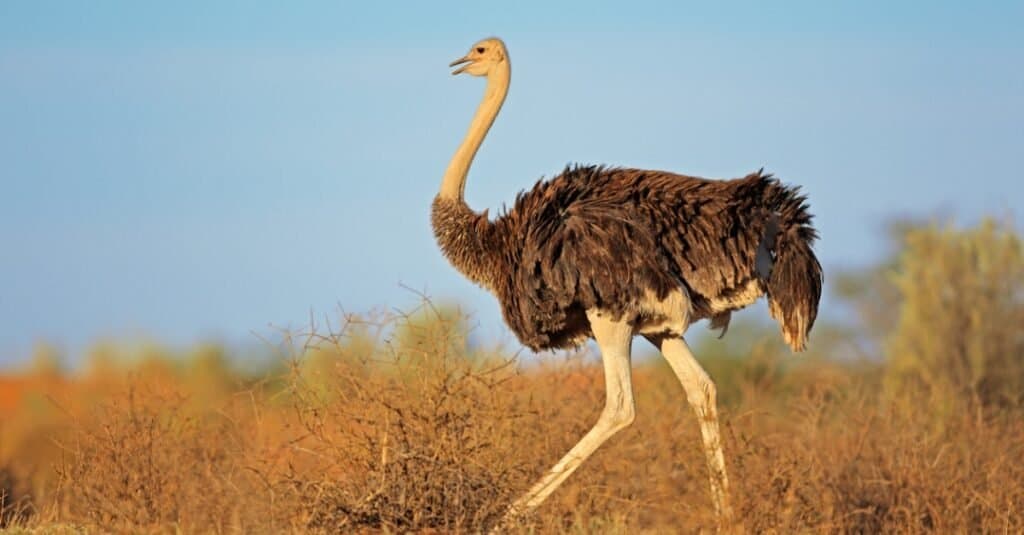Humans are omnivorous beings that need a good mix of fruits, vegetables, and meats. While vegetarians and vegans might disagree, scientific studies show meat is an important part of a healthy diet. Meat is rich in protein, iron, and other essential vitamins that keep your mind and body healthy. Eating meat from animals like cows, pigs, lamb, fish, and chickens is the most common. However, many animals are frequently consumed in different parts of the world, though some might view it as strange. Steaks are one of the most beloved meaty meals that Americans consume, and while ours are typically beef steaks, there is a whole world of different animal steaks. Let’s take a look at steaks and strange meats from around the globe.
What is Steak?
Steak is a flat cut of meat that may or may not contain bone and is sliced perpendicular to the muscle fibers. There is a variety of steaks ranging from affordable to extremely expensive. For example, a cut of wagyu beef can cost close to $200 per pound. The reason for the shocking price tag is the animal that it comes from. The cows that produce these steaks can cost over $30,000 at auction.
Not only is the animal important for the quality of steak you’re getting, but the part of the animal it comes from is also. A variety of beef steaks come from different areas of the cow, with some being used for specific dishes while others are best just grilled with some spices.
Examples of specific cuts include:
- Sirloin – Sirloin steak comes from the top of the cow’s back and is often large with little fat.
- Brisket – Brisket is cut from the breast area of the cow. It’s usually slow-cooked to maximize flavor.
- Strip – This cut comes from the loin and is known by other names like the New York strip Steak. This cut typically has distinct marbling and is best grilled or sauteed.
- T-bone – T-bone is also cut from the loin. It is a lean steak with a distinct T-shaped bone in the middle.
- Rib-eye – Rib-eye steak is cut from near the shoulder region of the cow. It is one of the more beloved steaks for its melt-in-your-mouth flavor.
- Tenderloin – Tenderloin is cut from the back half of the cow. It’s usually served in a thick, compact shape and is sometimes called filet mignon.
6 Strange Meats People Consume
While steak in restaurants and grocery stores is often made from beef, but there are other strange meats eaten worldwide. It may not be particularly common to buy or cook these types of meat in most of the U.S., but there are places all over the world that enjoy a variety of what we consider strange animal meats.
Not only do people prepare these animals as steak, but they also use them in a variety of ways. Some of these meats are dried and made into jerky, while others are cooked into a stew, roasted, sauteed, slow-cooked, or smoked. Unlike other parts of the world where these strange meats may be a bit more common, if you go into a grocery store in the U.S. you’re unlikely to find any specialty meats. There are specialty stores and even online stores that may provide you with some of these meats if you’re willing to try them.
1. Camel

Camel is everyday meat for many Middle Eastern countries.
©Benny Marty/Shutterstock.com
In Middle Eastern countries, camel is commonly found in people’s homes, while in other countries, it is only eaten at special ceremonies or holidays. For centuries camel meat has been enjoyed by many people. There are even writings of Ancient Greeks roasting entire camels for feasts, and emperors favor it. For many of these Middle Eastern countries, camel is an everyday meat where other protein sources like beef may be more scarce.
Camels are high in protein and are said to taste similar to beef. Especially when cooked into dishes like curry or stew, most people can’t tell the difference between camel or beef. The best cuts of camels come from younger ones. Older camels are said to be more tough and much less tasty.
2. Ostrich

One of the strange meats consumed in the world is the ostrich, which is common in South Africa.
©iStock.com/EcoPrint
In South Africa, the ostrich is a commonly eaten bird. If you visit a South African restaurant, it’s likely you’ll see ostrich somewhere on the menu. In Germany, ostrich meat is also becoming a common meat. There are over 150 commercial ostrich farms in Germany. Meat from this large bird is bought locally and imported from South Africa.
Ostrich meat is referred to as the other red meat because its taste resembles red meat more than it does poultry. These birds are easy to raise in the right climate and have excellent nutritional value. A unique aspect of the meat from ostrich is the pH balance which makes it uninhabitable for contamination by pathogens like E.coli.
3. Bear

Bear meat is similar to venison and commonly carries larvae of the parasite Trichinella.
©iStock.com/Mark Kostich
Bear meat is high in protein with a similar flavor profile as venison. The taste of bear meat varies depending on the diet of the animal. A bear with a diet of fruits and berries tends to be tastier than those with a diet of mainly fish. In areas of the world where bears are abundant, it isn’t common practice to eat bear meat.
While bear meat may be tasty, it is also unsafe to eat if not cooked properly. Bears are known to carry a nasty parasitic disease known as Trichinella and other diseases depending on their diet. To eat bear meat safely, it is recommended to cook it at 375 degrees until the internal temperature reaches 160.
4. Monkey

Baboons are common in illegal monkey meat markets.
©iStock.com/damien calmel
In some African countries, monkey meat is considered a delicacy and a “must-eat”. While monkey meat is more common in the Republic of Congo and South Sudan, it is also known to be eaten in places like China, India, and Vietnam. Flesh from primates is highly sought after in some areas for its succulence. In some parts of China, monkey brains may be consumed raw. The most common monkeys used for food are baboons, red-tailed and crowned guenons, and agile mangabeys. Unfortunately, over 3,000 gorillas are killed yearly and sold in illegal meat markets.
5. Reindeer

Reindeer is a form of healthy and lean meat.
©Pav-Pro Photography Ltd/Shutterstock.com
Recent studies by the University of Tromsø show Reindeer meat is one of the healthiest meats to eat. A full day’s serving of essential fatty acids is in just 100 grams of reindeer meat. It is low fat with a fat content of only 2% compared to red meat like beef with a fat content of 9%. Rich in vitamin B12, selenium, zinc, and iron, this healthy exotic meat is commonly consumed in Alaska and Norway.
6. Guinea Pigs

Guinea pigs are known as cuy, and are a popular delicacy in Peru.
©Rita_Kochmarjova/Shutterstock.com
When people think of guinea pigs, they think of cute cuddly family pets. However, in places like Peru, they’re considered a delicacy rather than a pet. Peruvian ancestors, the Incas, ate cuy (guinea pig) for centuries, and even now, communities in South America eat it at festivals and even restaurants.
Guinea pigs are typically cooked whole and either grilled or deep-fried. When it comes to what guinea pig tastes like, it all depends on how well it is prepared and cooked. In regions in Ecuador and Peru, locals recommend avoiding cooked guinea pigs in the rainforest regions. Instead, they say to go to the Andes Mountains, where they first started cooking guinea pigs.
Up Next:
- What Eats Snakes? 10 Animals That Eat Snakes
- What Animals Eat Great White Sharks?
- What Do Vampire Bats Eat? The Surprising Animals they Hunt!
- 7 Animals That Eat Their Young
The photo featured at the top of this post is © Cristian Zamfir/Shutterstock.com
Thank you for reading! Have some feedback for us? Contact the AZ Animals editorial team.






